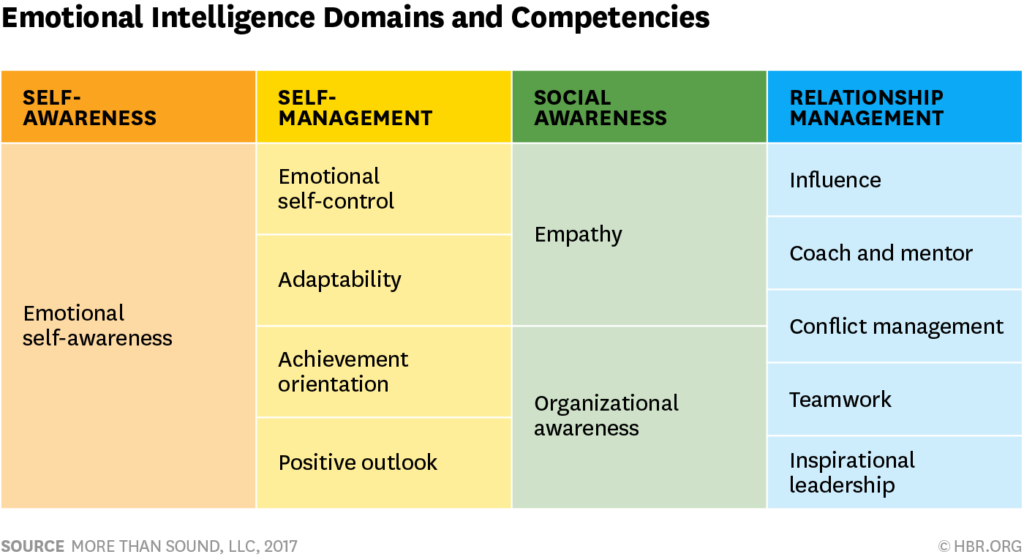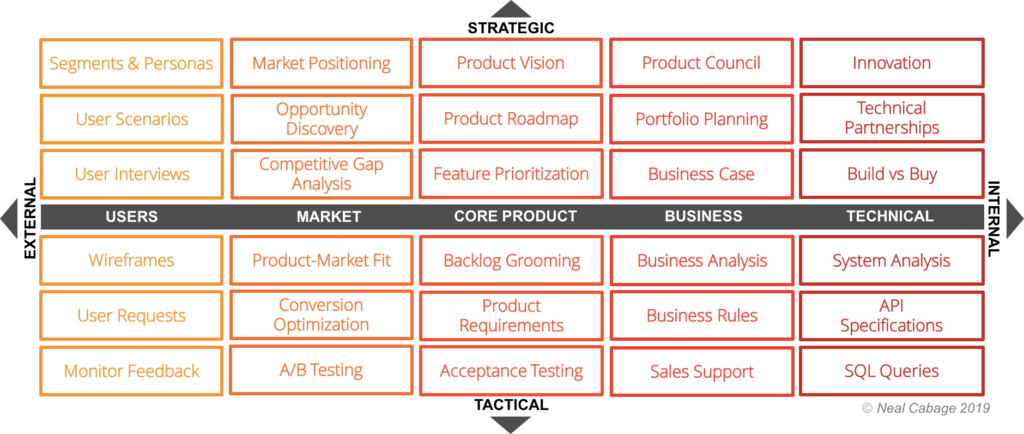Characteristics of great product managers
There are many different perceptions when hiring product managers. In most cases you need in general 3 preliminary characteristics to make sure the product manager that you are hiring will fit:
- Emotional intelligence: The capacity to adapt to any situation with all the stakeholders of the organizations
- Core competencies: The soft and hard skills required to be a product manager
- Company fit: Ultimately is matching based on the size, type of product, stage, industry, and even culture of the company.
There are core competencies that every PM must have — many of which can start in the classroom, but most are developed with experience, good role models, and mentoring. Some examples of these competencies include:
What is emotional intelligence?
A great Product Manager with a high EQ has strong relationships within each part of the organization and a keen sense of how to navigate both internal and external hurdles to ship a great product. Here’s a deeper look at how the, relate to the PM role:

What are the main core competencies?
These core competencies are the baseline for any PM, and the best PMs hone all of these skills over years of defining, shipping, and iterating on products thanks to a strong operational. These PMs excel at reflecting on where each of these competencies has contributed to the success or failure of their products and continuously adjusting their approach based on customer feedback.

1. Product taste. Product taste means having the insights and intuition to understand customer needs for a product in a given area. What product features will wow a customer or meet their core needs? If the PM is joining you from another industry they may not know the specific needs of your customers. However, they should have the skill set and tool kit to quickly learn about your customers and their needs.
2. Ability to prioritize. What is the value of a proposed product feature versus the engineering work needed to accomplish it? What is more important – a new product for the sales team or a feature for customers? Should pricing be optimized for consumers or small business owners? What is the 80% product that should be launched immediately and what singular customer problem does it solve?
3. Ability to execute. A big part of product management is convincing and cajoling teams and different resources to get the product to launch, and then to maintain the product and support the customer base. Product managers will partner with engineering, design, legal, customer support, and other functions to execute on the product roadmap.
4. Strategic sensibilities. How is the industry landscape evolving? How can the product be positioned to make an end run around the competition? Intel’s famous pricing strategy in the 1970s is a good example of a bold strategic move. At the time Intel understood there was a strong reduction in their own costs as they scaled unit sales. Dropping unit sales would lead to increased demand and volume, causing a virtuous cycle. Intel smartly decided to launch a new silicon product at cost below their COGs in order to scale market share faster. In response, their customers bought in volumes they had not projected until 2 years out, causing a massively lower cost structure for them and therefore profitability. In other words, their low pricing became self-fulfilling and sustainable through massive volumes years ahead of projections.
5. Communication skills. Much of the job of a product manager boils down to understanding and then communicating tradeoffs to a diverse group of co-workers and external parties.
6. Metrics and data-driven approach. You build what you measure. Part of the role of a product manager is to work with engineering and the data science team to define the set of metrics the product team should track. Setting the right metrics can be hard, and even the right metrics can sometimes drive the wrong behavior.
Of course, this list includes most of the competences but there is some competences more important in some context: performing market assessments, pricing and revenue modeling, conducting customer interviews and user testing, art of resource allocation (it is not a science!)
Does the product manager fit your company?
Every company has a different philosophy about the product development process and where product managers fit into that process. In the model below you have most of common types. These different types can be adapted to different phases or context:

Beyond those different profiles, we also consider that some of them are adapted by the context. We can define two major points:
- Startup: Beyond discovery, Building, and Execution, Product Manager in a startup are also responsible of another part of the organization, for pricing, marketing, support, and potentially even sometimes sales of the product. These product managers are in a scrappy environment and are comfortable with ambiguity and frequent changes to direction as the company works towards product-market fit and learns to operate at scale.
- Product Managers are likely to be more involved with company strategy, get exposure to senior leadership and the board, are able to take more risks and make a bigger impact. They also have more influence and authority over company resources.
- There’s typically little to no mentorship, role models, or best practices within the company. Budgets are tight, and Product Managers may not have the requisite experience to succeed at some of the things they’re tasked to do.
- Mature company: The Product Managers may have a narrower scope and have coworkers who handle marketing pricing, go-to-market strategies, and so on. And they are likely to be part of a larger team of product managers. Most of the time the marketing part is handle by a product marketing manager.
- Product Managers are more likely to have mentoring and role models, as well as development standards and best practices. Close association with an engineering team can create strong relationships over time, which is great for long-term impact and career growth. And if the product has market fit, there is an established customer base and performance baseline to work from, versus guessing until you get it right.
- Product Managers have less exposure to company strategy and are just one of many voices of the customer. They can get “lost” in the system and have to deal with more politics and tight budgets.
- Corporate company. The Product manager have most of the time a clear feature scope with a reporting line to ahead of product including other stakeholders. Most of the dev resources are centralized and work with a small team dedicated:
- Product Managers have a clear scope of work and resources available to achieve goals. The accountability is limited
- Product managers have poor exposure to company strategy and are just part of an overall product operationnal delivery. They might have to deal with more organization and politics than dealing with value and customer feedbacks.
Conclusion
There are many other factors to consider for any product manager role, such as the type of product you are building (B2B, B2C, industry and technology), the product phase and overall company culture (diverse, inclusive, flexible work hours, remote culture). These factors will help you to drive towards a robust decision.
However, if you are striving to be a great product manager, consider all of the above before signing on to your next gig. Developing these factors will be an ongoing activity throughout your career, and leveraging EQ will ensure a more positive experience. But where you work, how they work, and who you work with and for will ultimately determine the long-term success of your product management organziation.
Resources:
How hire good product manager by Ken Norton – Google Ventures
10-30-50 Product Management by Shreyas Doshi – Stribe
Who do you need EQ – HBR by Daniel Goleman and Richard E. Boyatzis
